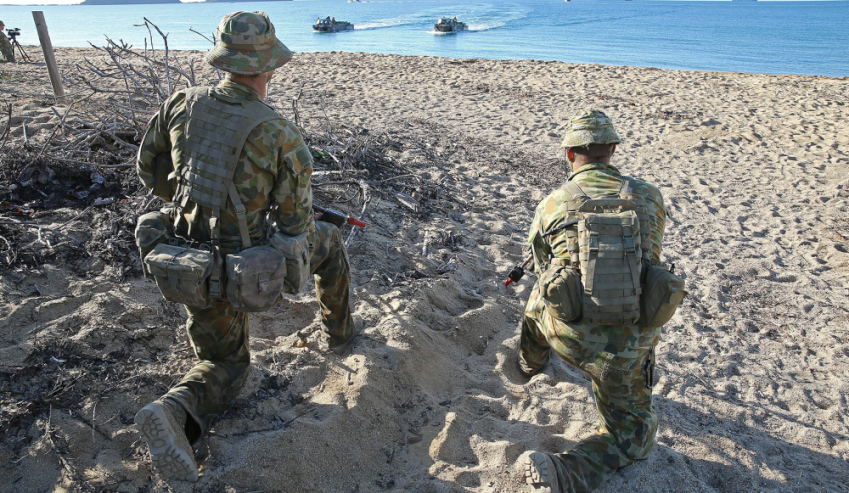Australia's leading defence and national security think tank, Australian Strategic Policy Institute (ASPI), has warned Parliament’s proposed Bipartisan Australian Defence Agreement will create more strategic risk for Australia and is at odds with Australia's model of governance.
To continue reading the rest of this article, please log in.
Create free account to get unlimited news articles and more!
Federal Parliament is currently inquiring into the benefits and risks of a Bipartisan Australian Defence Agreement with a focus on the efficiency of Australia's existing strategic planning process and bipartisan or independent approaches, the opportunity cost of short-term and shifting defence priorities, and whether such an agreement should include the role and responsibilities of other agencies that contribute to Australia’s foreign policy, intelligence and security, and defence architecture.
But Dr Andrew Davies and Dr Mark Thomson of ASPI said the inquiry's terms of reference - to deliver the best and most capable defence force that Australia can afford - represents a failure of strategic thinking.
"Under that approach it would be possible to keep adding capability beyond the calculus of strategic cost-effectiveness, at an increasing opportunity cost elsewhere in the government’s budget," Mr Davies and Thomson said in a joint submission to the inquiry.
"Defence and the ADF would almost always welcome more funds and more capability. The question that any government faced with a request for funds should always ask is whether the proposal represents the best available return on investment for the nation. Rational strategic planning would support investment in military capability only to the point where diminishing returns mean that further investment would cost more than the impact of the risk being retired."
The changing geopolitical environment
Davies and Thomson argued the changing circumstances facing Australia in the strategically and socioeconomically sense will continue to evolve and alter the government's spending needs.
"The underlying forces that are reshaping our geopolitical environment are also reshaping our economic prospects and, indeed, to the socioeconomic fabric of Australian society," the submission said.
"Governments need to have the freedom to respond with agility and, when necessary, to reallocate resources from one area to another."
While the submission from the former Department of Defence alumni acknowledged that the "strongest argument" for a bipartisan agreement is locking in planning parameters beyond the immediate electoral cycle and providing confidence to Defence and defence industry, the pair argue the government has managed to launch long-term projects without such an agreement.
"Without a formal bipartisan agreement in place, Defence has still managed to launch a 35-year-long future submarine project, and is well down the road to a rolling production model for warships. The F-35 Joint Strike Fighter acquisition has survived two changes of the party in government (so far) — and, we might add, five prime ministers and even more defence ministers," Mr Davies and Thomson said.
"Politics has caused some disruption to defence plans over the past 15 years — not least the decision of the government of the day earlier this decade to reduce Defence’s budget — but it’s hard to point to any change that has affected the ongoing development of capability in an enduring way."
"While the pace of development of the ADF hasn’t been as rapid as first envisaged in some instances, in the bigger scheme of things there has nonetheless been steady progress."
A bipartisan defence agreement is at odds with Australia's model of governance and creates more strategic risk
The submission also said the proposed agreement would take away "the discretionary power" of future governments to make different decisions about strategic priorities as well as forcing a government to reach a "lowest common denominator approach" to defence.
"Taking away the discretionary power of a future government to make different decisions about its strategic priorities would represent an unwarranted change to the executive powers of the Australian
government," Mr Davies and Thomson argued.
"The negotiation of a bipartisan agreement would reduce the government’s executive prerogative by forcing it to shape its defence policy to a lowest common denominator. Defence is too important for that. The government should be able to assert its position, and the opposition should be able to test and challenge and contest government policy in defence as it does in other areas. A robust policy debate with substantive points of difference is a strength, not a weakness, of our democratic system."
Dramatic changes, such as geopolitical shifts, economic crisis or revolutionary technologies, could also result in the current force structures and military hardware and software being rendered obsolete within a decade and may require change to multi-decade projects.
"We would go further to suggest that it would create, rather than retire, strategic risk," the submission said.
"The amount spent on Australia’s defence, and how that money is spent, should be subject to constant review and analysis. Locking in spending levels and capability priorities would render such analysis pointless."
Submissions to the inquiry, to be chaired by Liberal Senator Linda Reynolds, remain open.

 Login
Login







